I’ve always regarded auto-belay machines with the kind of god-fearing skepticism that Jim Bridwell reputedly held for GriGris when he infamously said that he “doesn’t trust anything you can’t see the inside of.”
That doesn’t even make sense, since you literally open up a GriGri every time you load the rope into the device. But I would never argue with the Bird, even in death, although I do remain bitter about the one time he offered to drink all of my whisky in Camp 4 in exchange for telling stories no one asked to hear. I consider this to be birdsplaining and a microaggression.
Unlike GriGris, auto-belay machines actually are black boxes of chance and karma. Whenever I use one, I almost always find myself down climbing instead of weighting them. That’s because of that little nut-puckering moment before you feel the machine catch your weight. And unlike with a human belayer, you can’t even yell and get mad at the auto-belay machine to tell it that it’s doing it all wrong.
I once wrote a script for a skit parodying “Free Solo.” In my skit, the Alex Honnold character enacts this common complaint of auto-belay machines not making you feel secure before you let go. A credulous interviewer asks Honnold, “Aren’t you afraid of falling?” to which Honnold replies, “I mean, sure. If I were to fall, it’d be the most horrifying .3 to .5 seconds of my life … but then, ya know, the auto-belay would catch me and it’d just be no big deal, ya know?”
(Can’t you see the potential for super-hilarious slow-motion auto-belay falls with Honnold? If anyone wants to underwrite this script, let me know.)
While I remain skeptical and afraid of auto-belays for my own use, I’m more than happy to put the two most important people in the world to me on them. Now that my kiddos are heavy enough to use the auto-belays, I’ve begun to see auto-belays in a new light. They’re kind of like dog leashes in front yards that owners use to tie up their animals so they don’t have to bother taking their pets on walks to go potty, giving them more couch time which they definitely need. Similarly, with auto-belays, you can just tie off your kids and go do something actually fun like send boulder problems within earshot / eyesight of your kiddos.
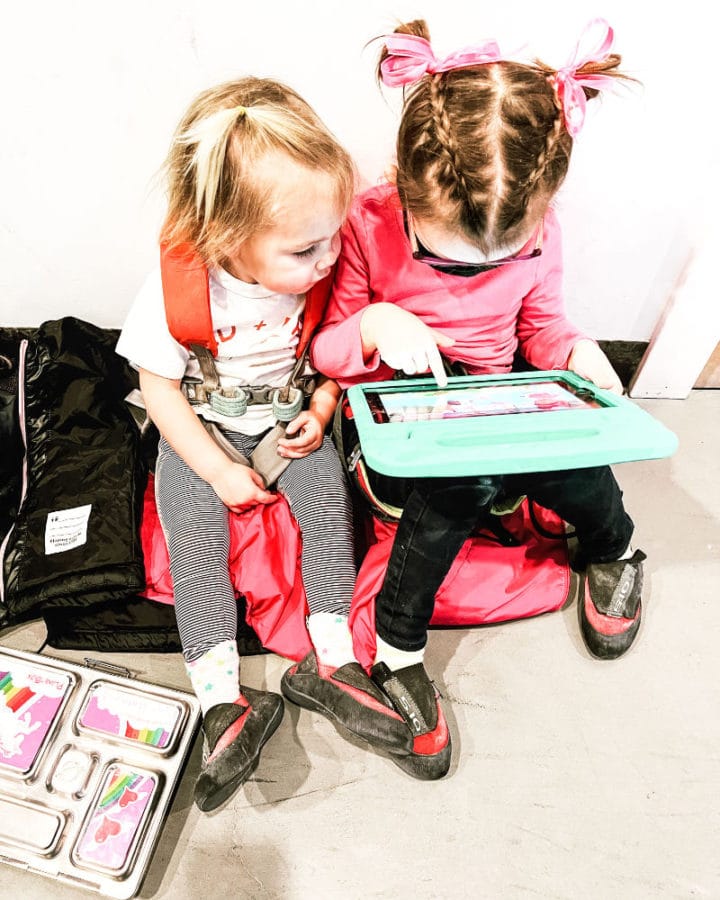
So, yes, technically we took our kids climbing last weekend. And that actually means they just fucked around on some auto-belays, climbing up as high as they dared and jumping off the wall a hundred times in a row. They also sat in a corner with their climbing shoes on and stared at an iPad screen for an hour.
But let’s be honest. Staring at a screen while wearing climbing shoes is basically just MoonBoarding, right?
Book of the Week: “A Feeling for Rock”
Sarah-Jane Dobner insisted I receive a copy of her new book, “A Feeling for Rock,” even though I told her I hate climbing fiction and would probably hate her book since that is how it was categorized on the internet. After many weeks, a copy finally made its way to my home, and I rolled my eyes at the cover: a rather ugly photo of a chalky finger touching rock. If this were any more on the nose it’d be Boot Flake.
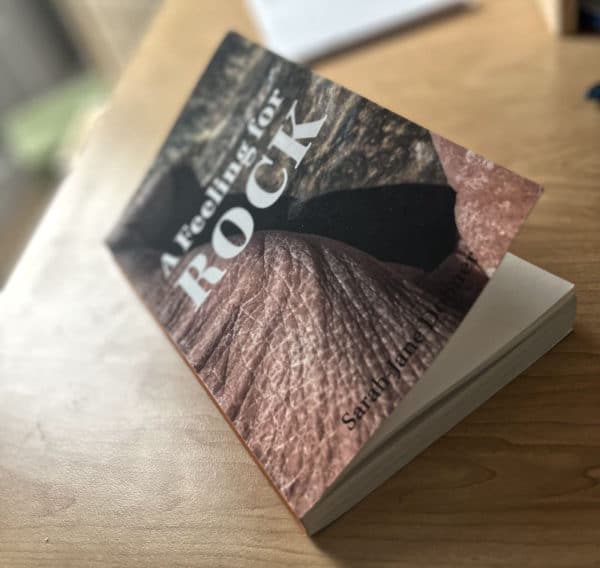
All of this preamble, suffice to say, is a textbook example of why one shouldn’t judge a book by its cover.
“A Feeling for Rock” defies an easy categorization—it’s a compilation of essays, poems, and vignettes. The goal of the book, according to Dobner, is to convey what it feels like to be a climber. By that metric, she succeeds in unusual vectors and surprising strides. “Climbing. Sex. They hit the same buttons in many ways. The dance of them, the physicality, the risk-taking, the exploration of the unknown. Whilst other activities are time-fillers, sex and climbing are the real thing.” Now you’re speaking my language, lady!
I was really surprised by how much I enjoyed this book. It’s thoroughly weird, which is GOOD. It’s easy to pick up and read a chapter, or a poem, and then put it back down—or keep going. Even the poetry is pretty good. Here’s an excerpt from “Cabbage”:
Ribald, surely
With your helmet wedged
In a chimney
And you can’t go up and you can’t go down
Or lying horizontal
On a ledge smeared with guano
With a gull hawking
Fish-bile into your face
Whilst you blindly fumble
With your oily fingers
For any kind of grip
Could you choose a voluntary pastime more ridiculous?
The ludicrousness
Of how dangerous it is
You could die!
Somehow, hilarious
Dobner’s passion for the climbing lifestyle comes through in her unique way of seeing the world and the always needed female perspective on climbing. “A Feeling for Rock” establishes her as one of the more interesting voices in climbing writing that I’ve come across lately, and I look forward to reading more of her wit, humor, and sincerity.
This Week on Evening Sends
Be sure to check out Jim Lawyer’s article on his vision for “Project Thirteen,” in which he vows to climb 5.13 in 13 different countries. In an era in which grades have reached 5.15d, this is hardly a notable accomplishment but for the fact that Jim didn’t climb his first 5.13 until he was in his 50s.
“Climbing 5.13 is no longer a big deal for many in the climbing world. But it is to me,” he writes.
Check out his ticklist and story on Evening Sends. As Jim writes: “I wanted to share my Project Thirteen tick list with the hope it inspires others out there who aren’t pro climbers, who may be in their mid-50s, to dream big and come up with their own project that inspires them to do what they never thought they could.”
Already, it seems to be working …
This Week on The RunOut podcast

We have two new episodes up. In episode #75, Chris and I catch up on the latest celebrity gossip: weddings, babies, and who we are wearing this season. Then we are joined by Dorian Evers, a climber and couples therapist from Boulder, to talk about some of the typical red flags and relationship disfunction that she sees across the climbing world, beginning with how relationships are portrayed in films. In our final bit, we share music from a folksy bluegrass band from California, One Grass Two Grass. Their song She Sings is from their latest album All Storms Pass. (The band’s bassist, Sam Trimboli, is a solid rock climber and surfer.)
For our Rope Guns, we have a bonus episode titled “Just Who the F*** Do Guidebook Authors Think They Are?” In this episode, we kick it with Andy Salo, a good friend, climbing historian, badass climber, and author of Gunks Climbing, a modern Guidebook to the Gunks by Wolverine Publishing. And we talk about guidebooks, why you’d ever want to write one, and how they influence the culture of a climbing area.
If you want to listen to this incredible conversation, visit us as Patreon.com/runoutpodcast and become a $5.14 Rope Gun or $10 Game Changer to access this and more great content and support your favorite climbing podcast.
Reader Feedback of the Week
In response to my article “A Climber’s Approach to Risk During the Pandemic,” one reader from outside the United States shared an interesting perspective on individualism and American culture. He writes:
Another way climbing and the pandemic can be related are the changing social norms. People used to throw shit off big walls, thankfully that’s no longer acceptable but new questions arise like should you be allowed to keep fixed lines on the wall.
We’ve been taught for at least half a century now that the most (or even ONLY) important thing is our own individual experience. Everyone look out for yourself and somehow we’ll get a functioning society out of the chaos. Some people are never going to get COVID, some will and won’t really be affected, some have and will die. But it’s really hard to draw a causal connection between your individual actions and the fact that the pandemic is still killing like a thousand people a day. No one rope or pile of trash on El Cap is what’s ruining the scene, but all of it together. Climbers took pride in being trailblazers and being out (or up) in the middle of nowhere on your own. That’s very emblematic of American social mentality. Eventually society catches up though, and then we have to come to terms with the fact that society encompasses all of us, but is also more than that. It requires its own rules and expectations. Communicating this is difficult for the reason you mention, that people tend to latch onto a narrative. But there’s no black and white answer. It’s weighing priorities.

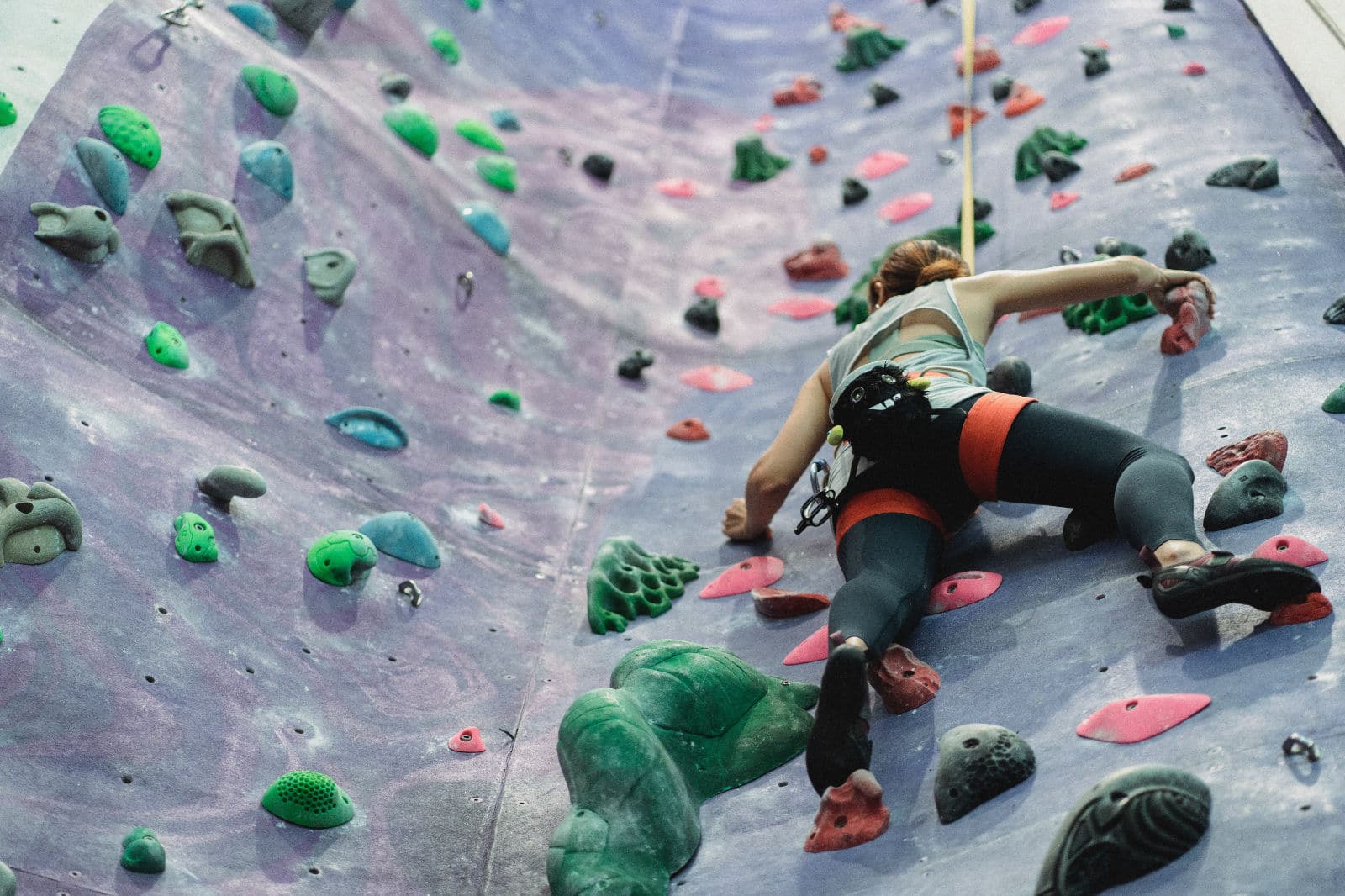
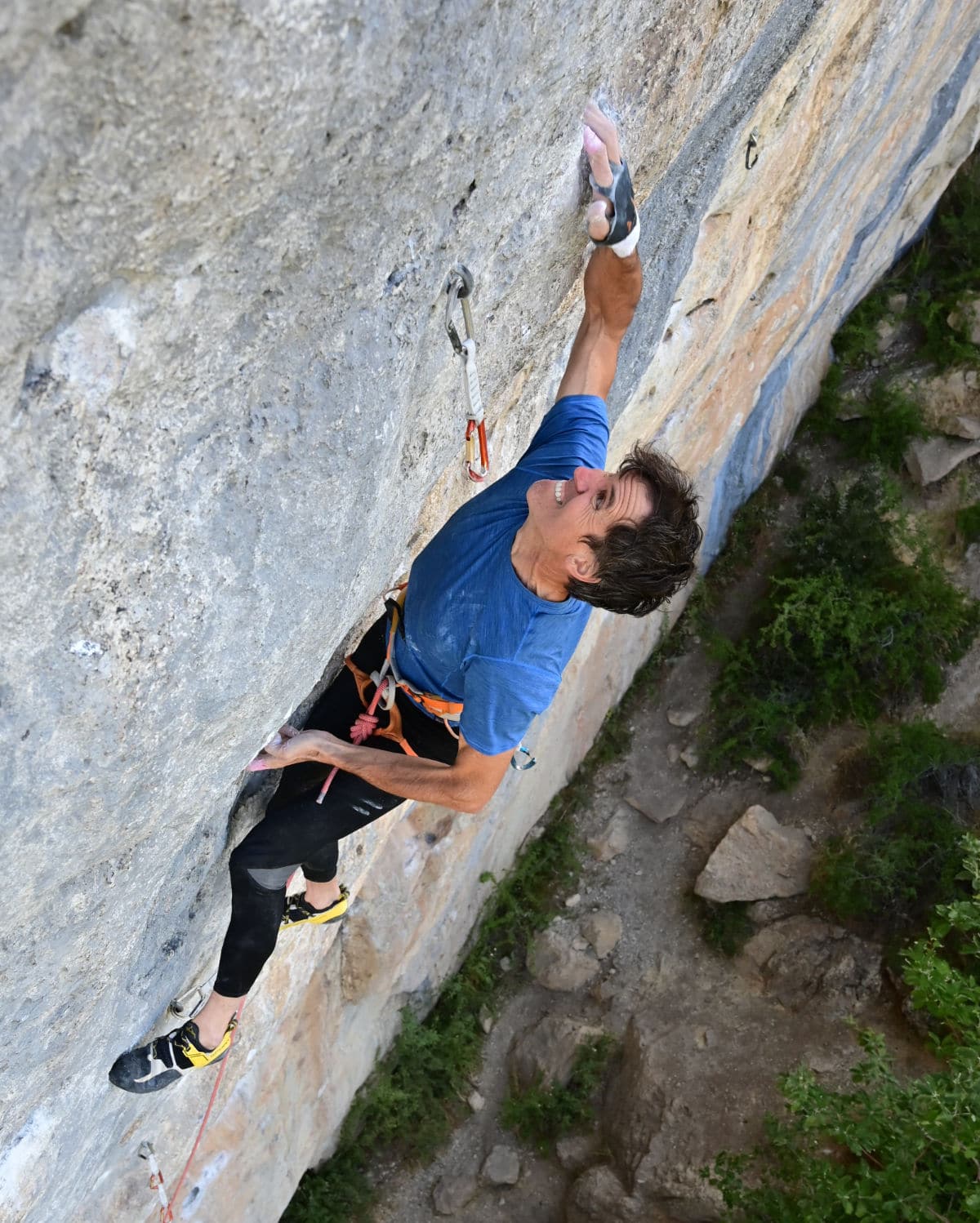
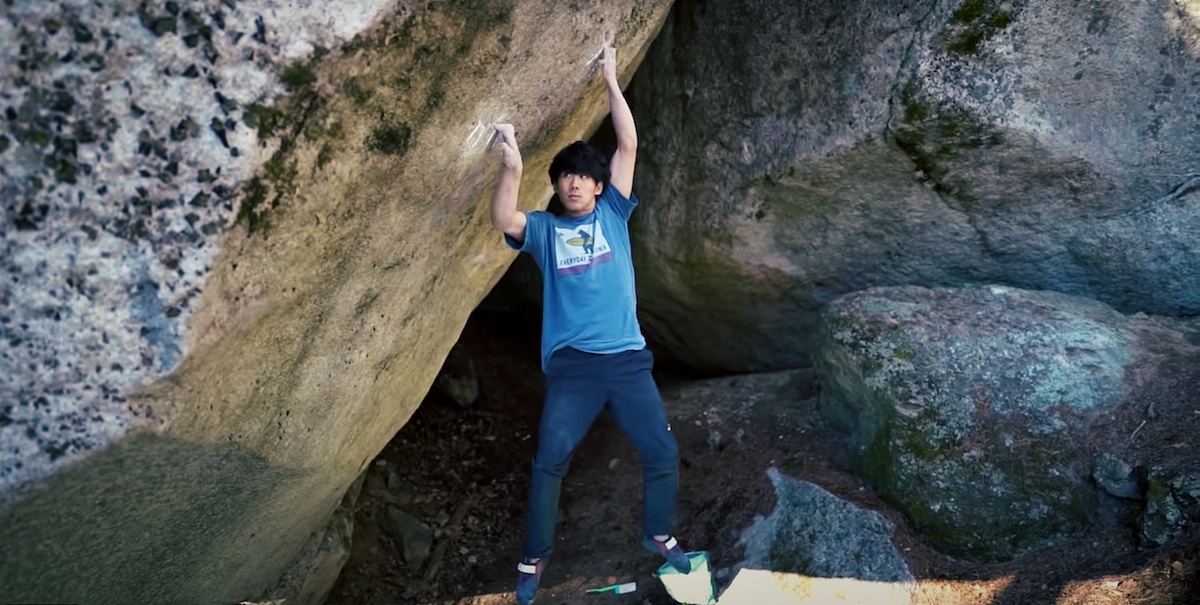


0 Comments